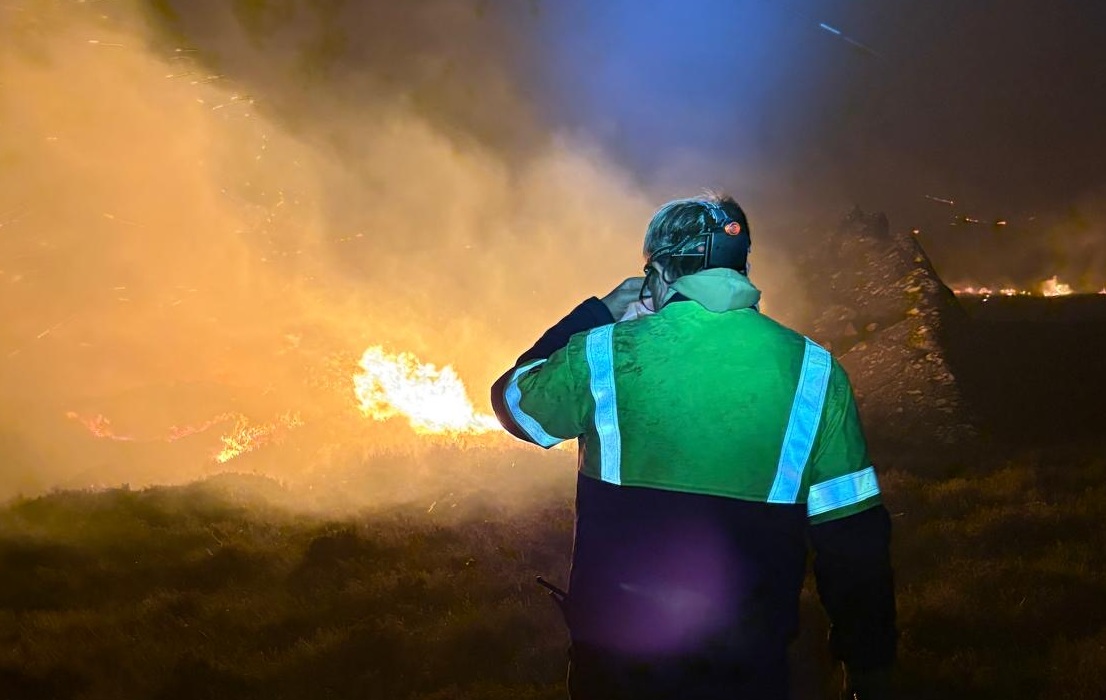
A new report hails farms, estates, and rural businesses as heroes for their extraordinary role in battling Scotland's largest-ever wildfires.
The wildfires burned across an unprecedented 11,827 hectares of moorland and woodland in Carrbridge and Dava, northern Scotland, in late June.
Prepared at the request of Scottish government officials, the report, published by Scottish Land & Estates (SLE), reveals the extensive resources, manpower, and expertise contributed by at least 33 businesses, including 27 estates.
The collective value of specialist firefighting equipment deployed by private land managers is conservatively estimated at £3.1 million, with over 100 employees engaged in the containment effort.
The report's release coincides with a visit to the affected area by Jim Fairlie MSP, the Minister for Agriculture, who met with local land managers involved in the emergency response.
Ross Ewing, director of moorland at SLE, said: “The Carrbridge and Dava wildfires represent the largest such event in Scotland’s history – and without the extraordinary intervention of rural businesses, the scale of devastation would have been even greater.
“These land managers brought not only equipment and personnel, but also essential knowledge of the terrain and fire behaviour – much of it honed through generations of safe muirburn practice. Their contribution should be commended, supported and learned from.”
The report highlights that more than 110 all-terrain vehicles (ATVs), fogging units, tractors, diggers, water bowsers, and other assets were deployed during the firefighting effort.
At least 101 employees from the businesses surveyed were directly involved in containing the fires. Of those who helped, 79% had practical experience of controlled burning (muirburn), and 66% were formally trained in its use.
A wide range of advanced tactics were employed, including tactical backburning, coordinated ATV chains, firebreak excavation, and suppression using fogging units, leaf blowers, and slurry tankers.
Several near-miss incidents occurred, underscoring the volatility of the fire and the bravery of those responding.
The report also identifies key gaps in the Scottish Fire and Rescue Service’s (SFRS) wildfire response capability and makes several recommendations.
It also highlights that the licensing framework for muirburn, introduced through the Wildlife Management and Muirburn Act 2024, could reduce the ability of land managers to conduct fuel load management—a critical factor in wildfire prevention.
Mr Ewing continued: “If we make it harder for skilled land managers to carry out preventative muirburn, we risk losing the very infrastructure and capability that helped contain these fires.
"Under the recent legislation, there is a ‘necessity’ test regarding use of muirburn on peatland, and a presumption in favour of other vegetation control methods.
“By amending this to an appropriateness test, it would allow this vital practice of muirburn to be carried out more freely while simultaneously retaining licensed regulatory oversight by government agencies.”
Additionally, the report calls for government exploration of a compensation mechanism to support businesses that suffered financial losses—including damage to equipment, infrastructure, and peatland restoration projects—as a direct result of their firefighting efforts.
Mr Ewing concluded: “Without the courage and commitment of those who stepped up during this crisis, the outcome would have been far worse. We owe them our thanks – and we owe them action.”
